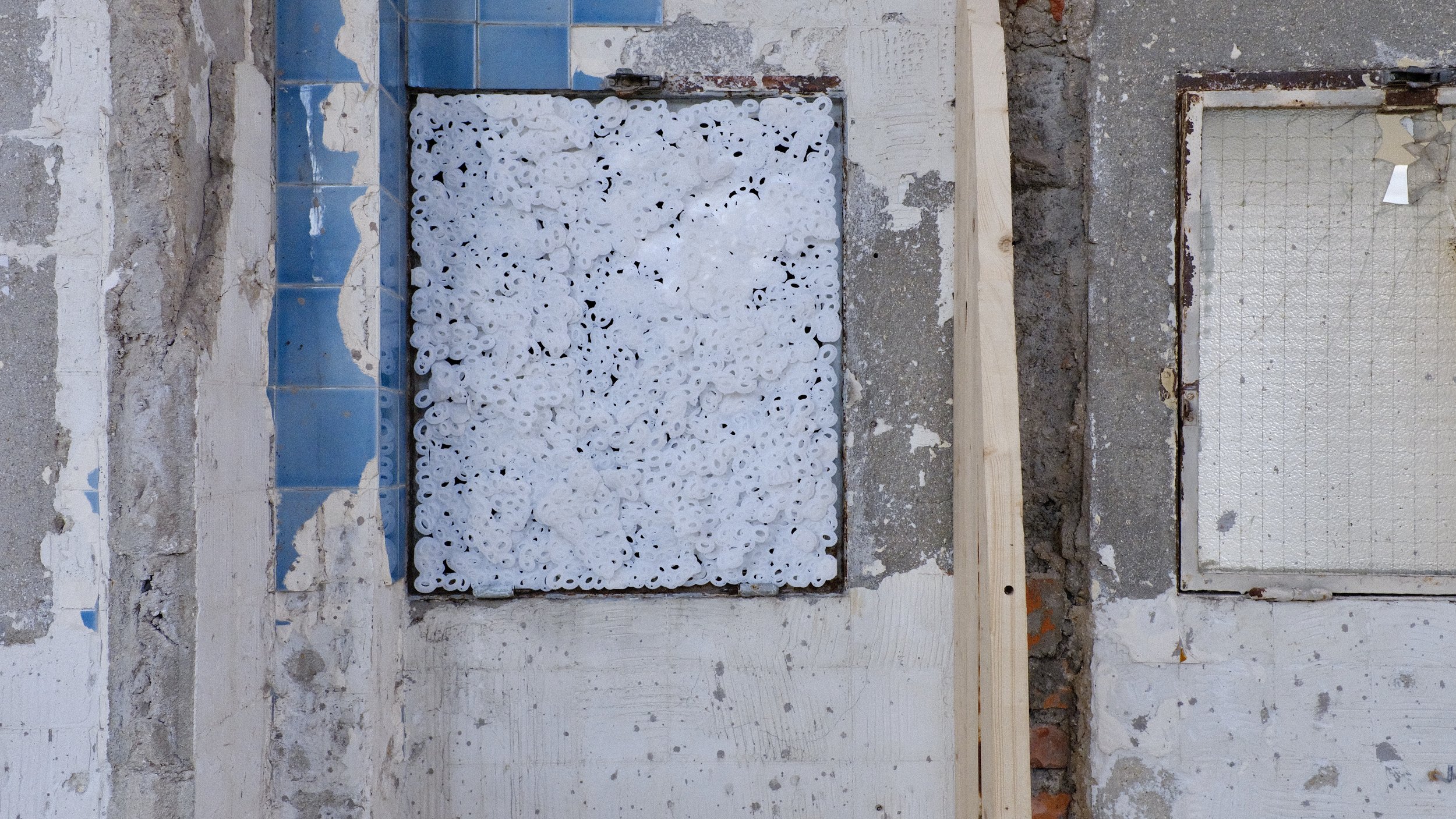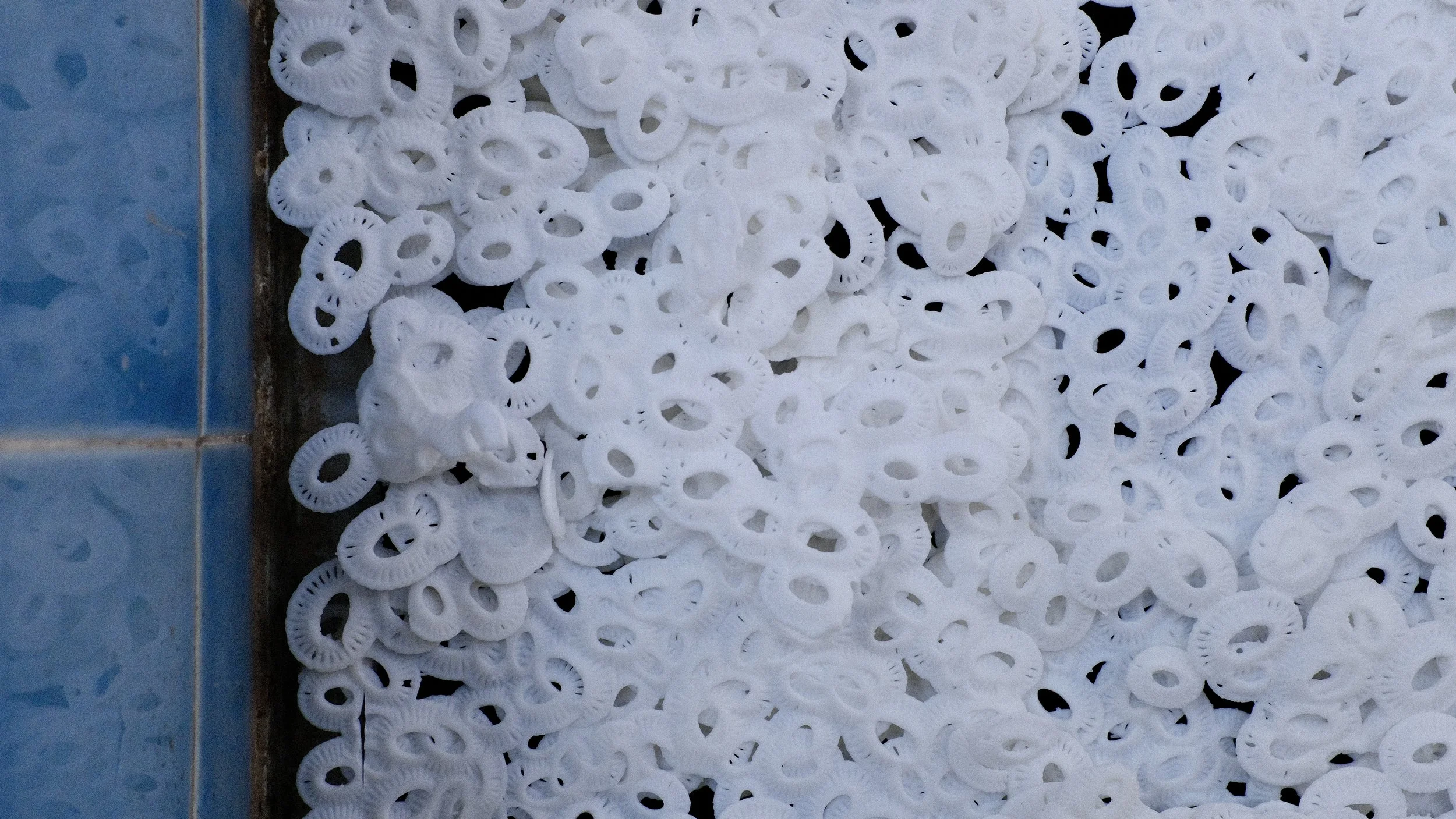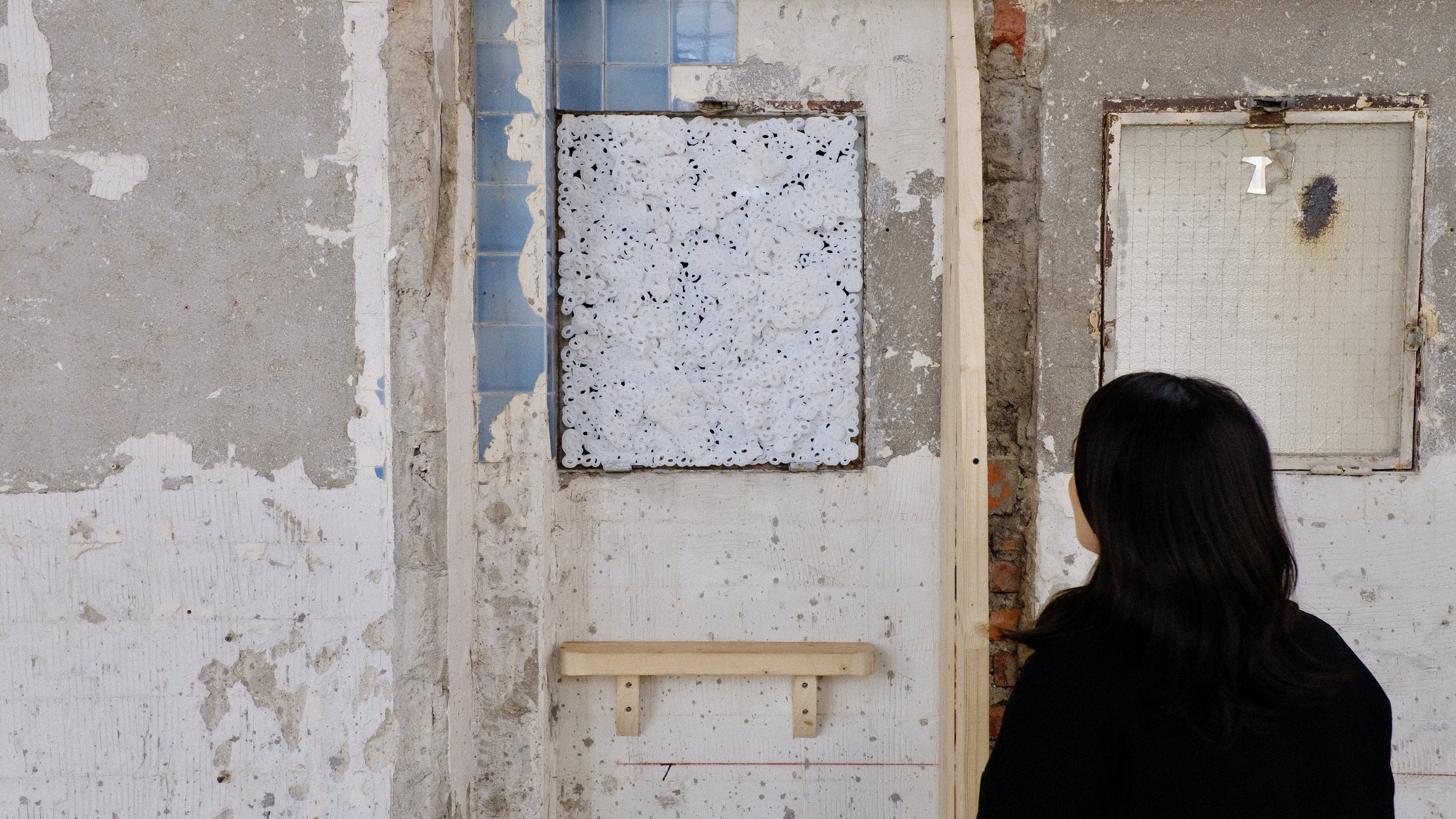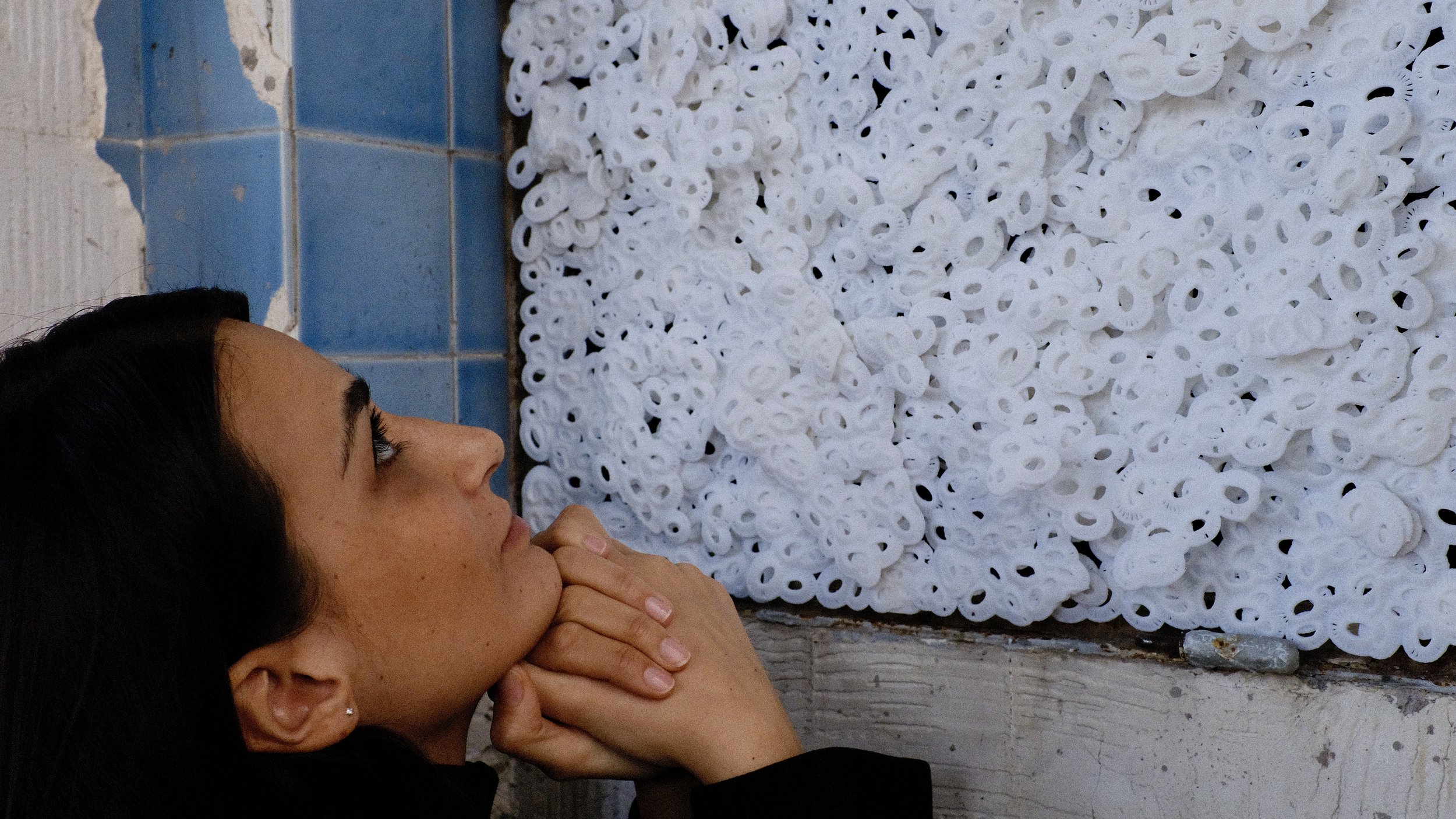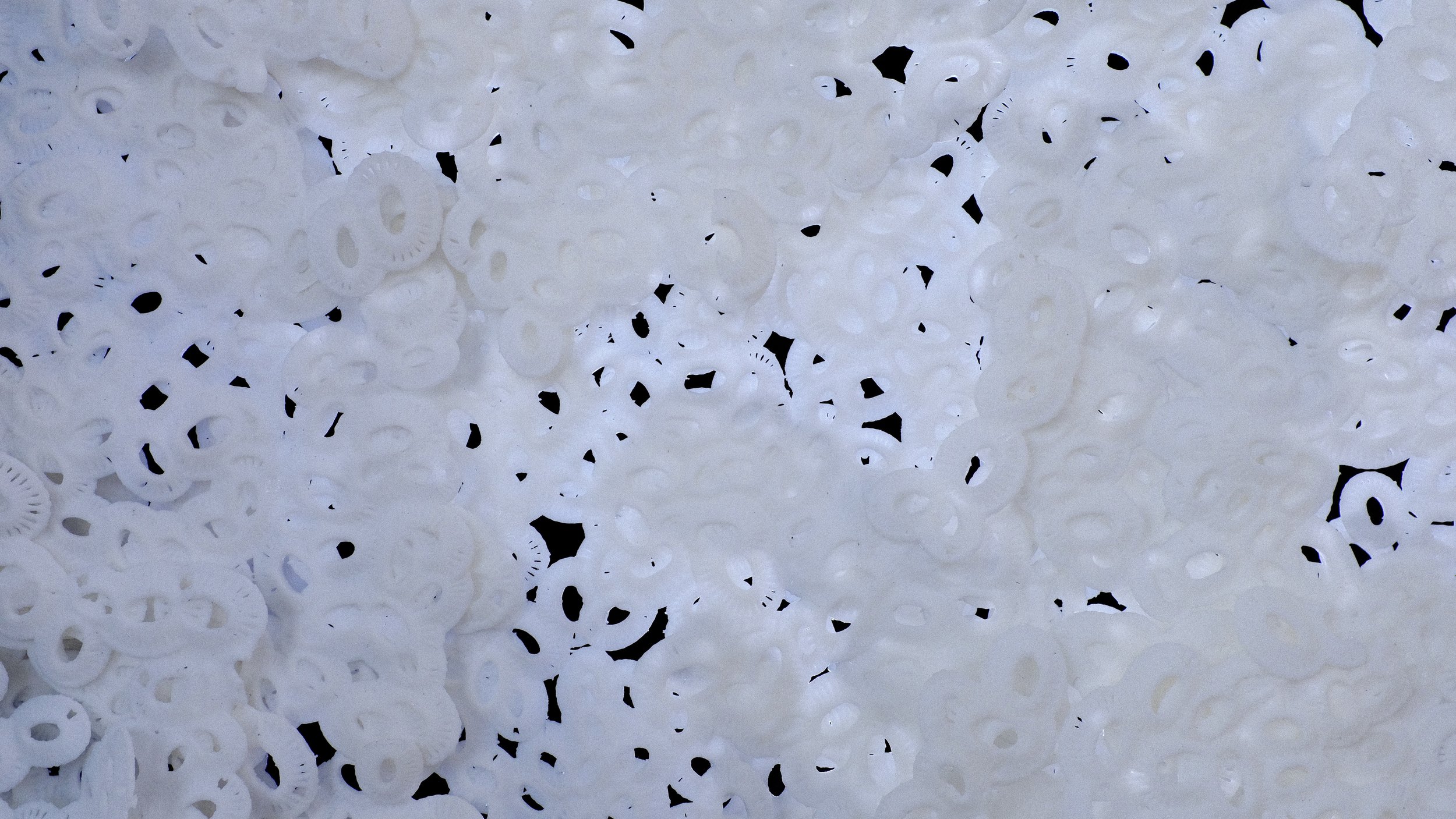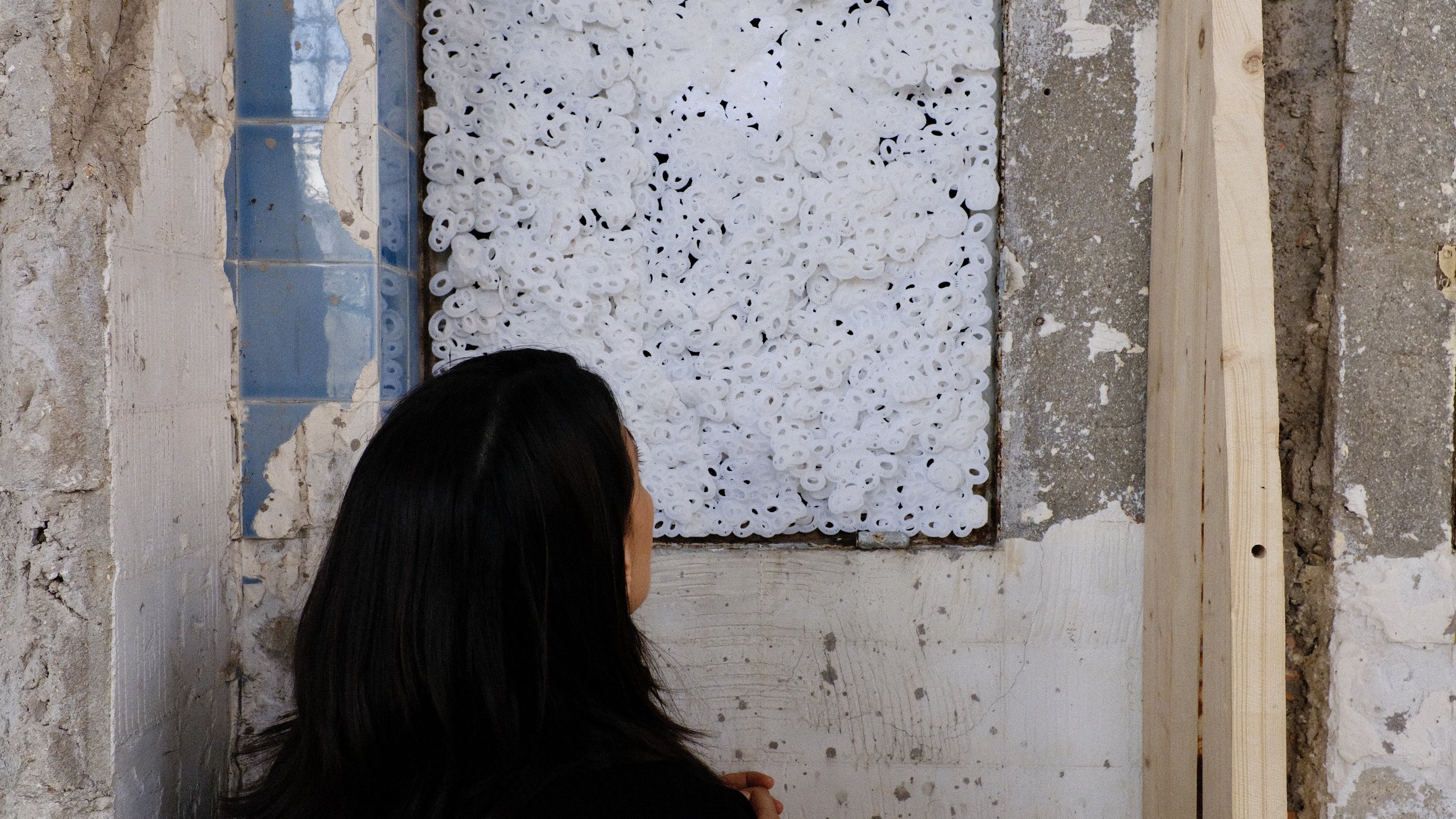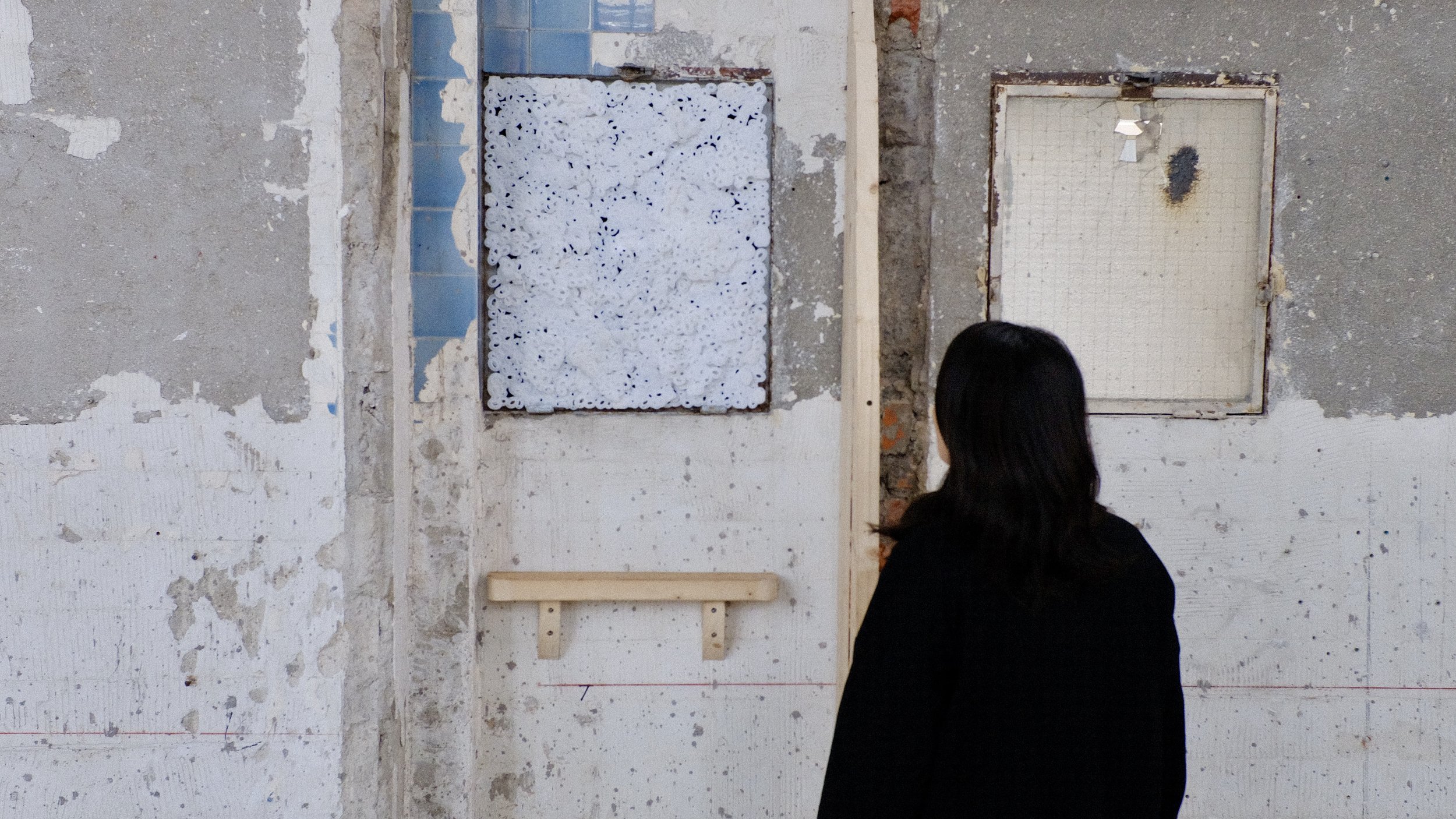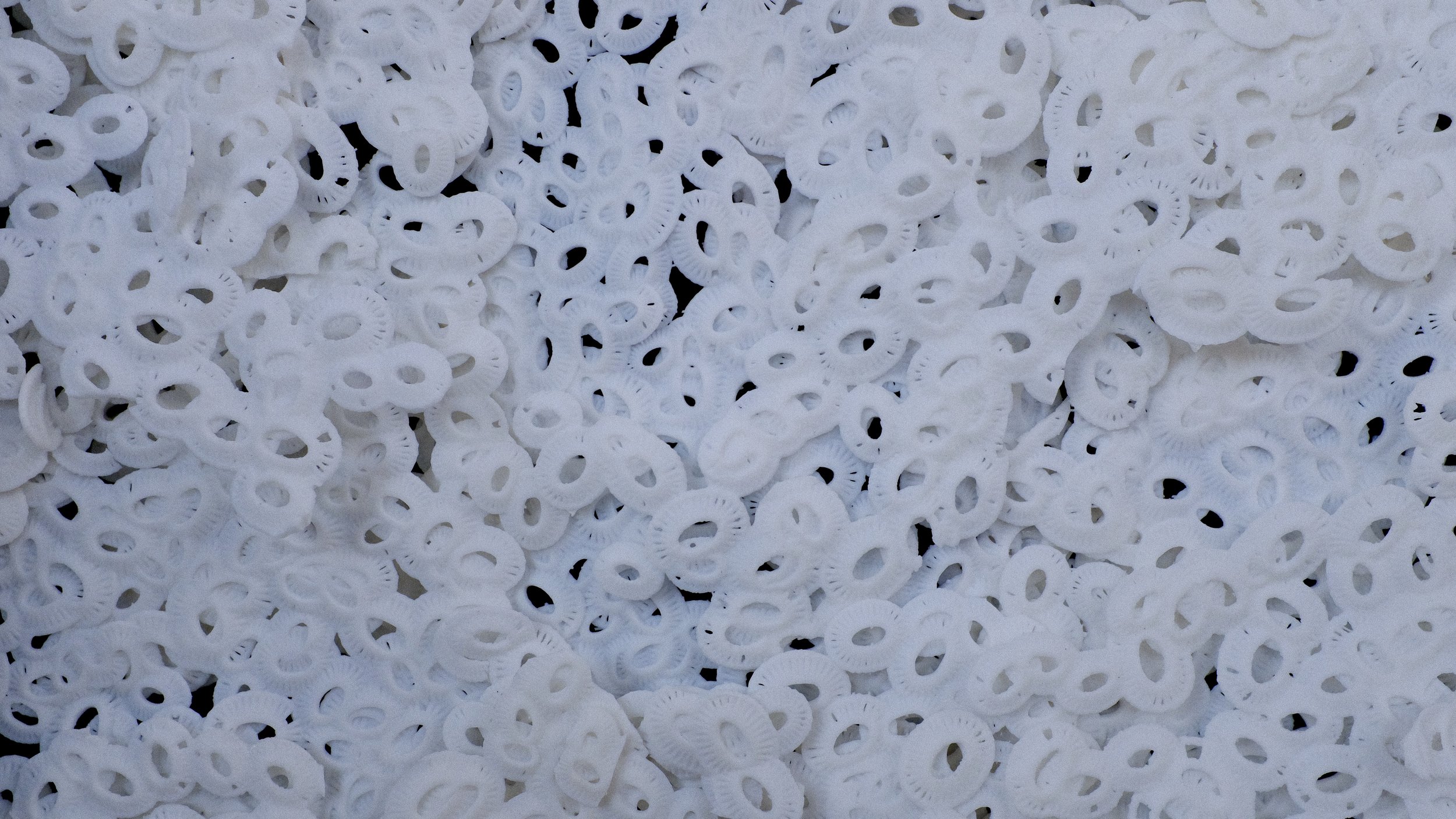VOices of tiny gods
Year: 2023
Dimensions: 50cm x 60cm
Materials: 3D printed lattice (made from scanned microalgae), sonified infochemicals concentrations, ultra-directional speaker, video mapping.
Curation: Christopher Yggdre and Stéphanie Pécourt
Science Collaborators: Michel Flores, Constanze Kuhlisch
Coccolitophore scan provided by La Station Biologique de Roscoff
Produced by: CWB
Avec le soutient de: La Fondation Fiminco
Expertise Impression 3D: Thomas Garnier
Exhibited at: Fondation Fiminco (Symbiosium Exhibition)
An artist lead scientific ritual dedicated to phytoplankton intelligence
A lattice based on the morphology of phytoplankton invites the visitor to experience a form of oceanic intelligence.
Coccolithophores are single-celled nano-algae protected by a skeleton of calcite scales. They produce 60% of the Earth's oxygen in spectacular oceanic events called blooms, during which the sun's reflection on their body becomes visible from space.
Phytoplankton allow humans to breathe, and they talk. Through the exchange of semiochemical molecules called metabolites, coccolitophores speak: a floating poetry that scientists are only beginning to try to decipher.
The concentrations of these chemical words are orchestrated into a sound composition, where each note of a church organ are activated by data collected during a bloom in the south Atlantic ocean.
The installation invites humans to listen to the evolution of phytoplankton conversations.
Coccolitophores, a species that has inhabited the Earth for much longer than humans, have probably been discussing for millions of years, the ways in which light reflects off their scales across the ocean surface. Or about the shape of the universe, as perceived through the surface of the ocean?
If humans were able to comprehend and speak their floating poetry. What could we tell them?
When they die, the algae, invisible to the naked eye, fall to the bottom of the water, the accumulation of their skeletons eventually forming landscapes of chalk, which humans have long used to create sculptures, or religious buildings…
